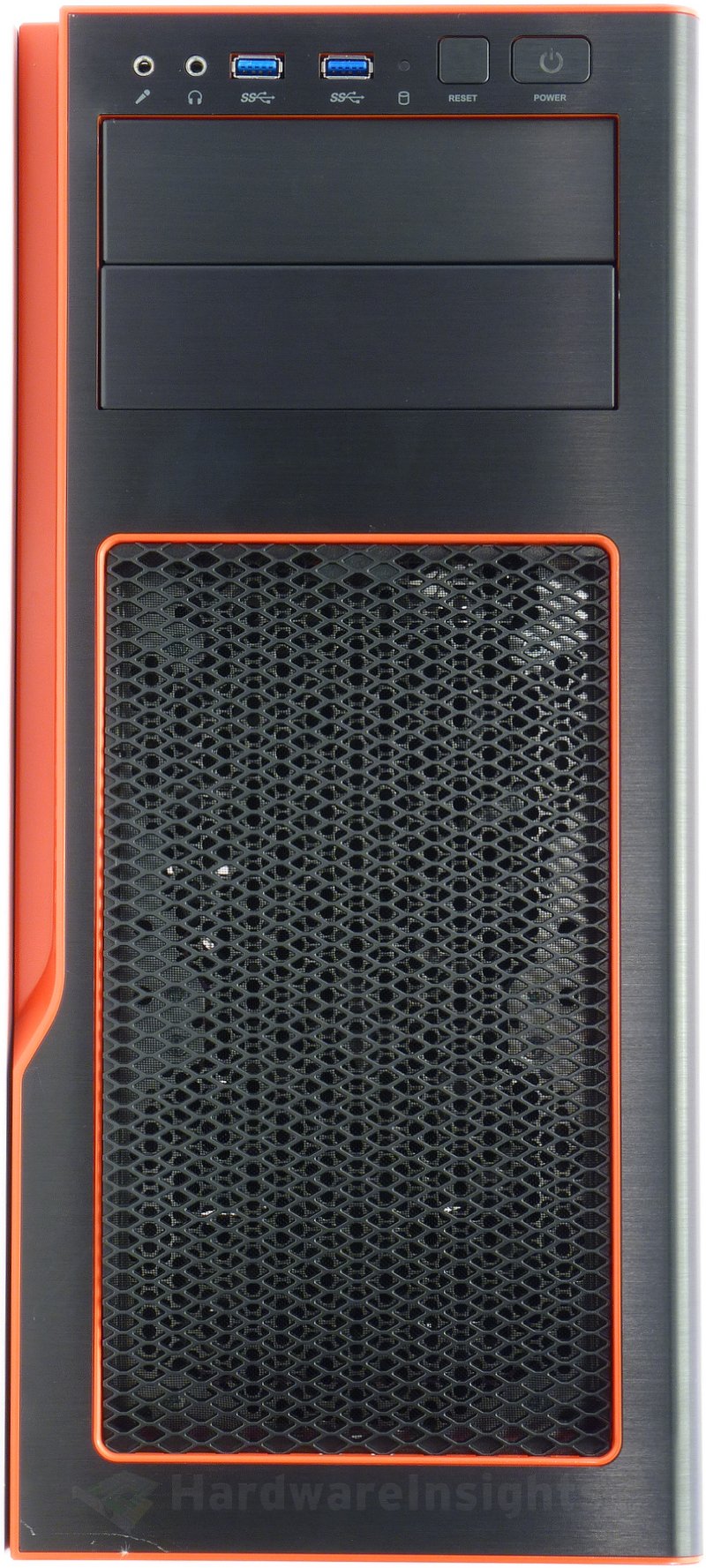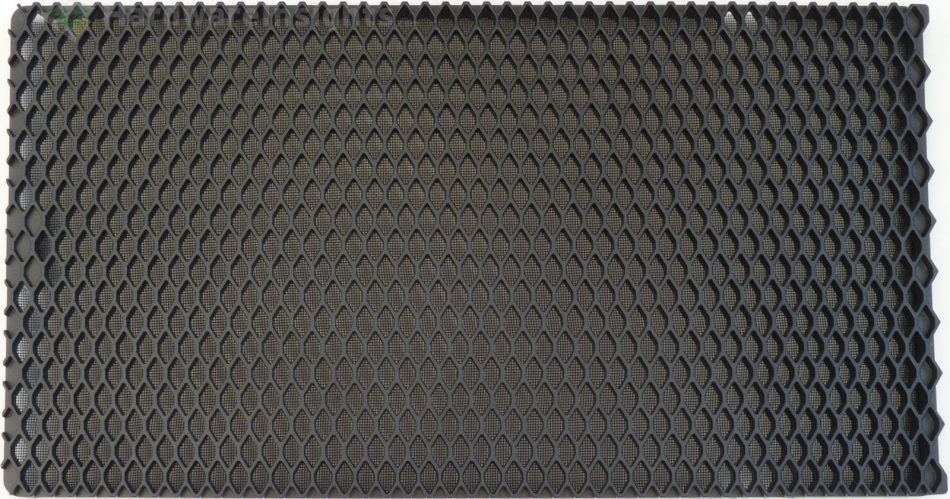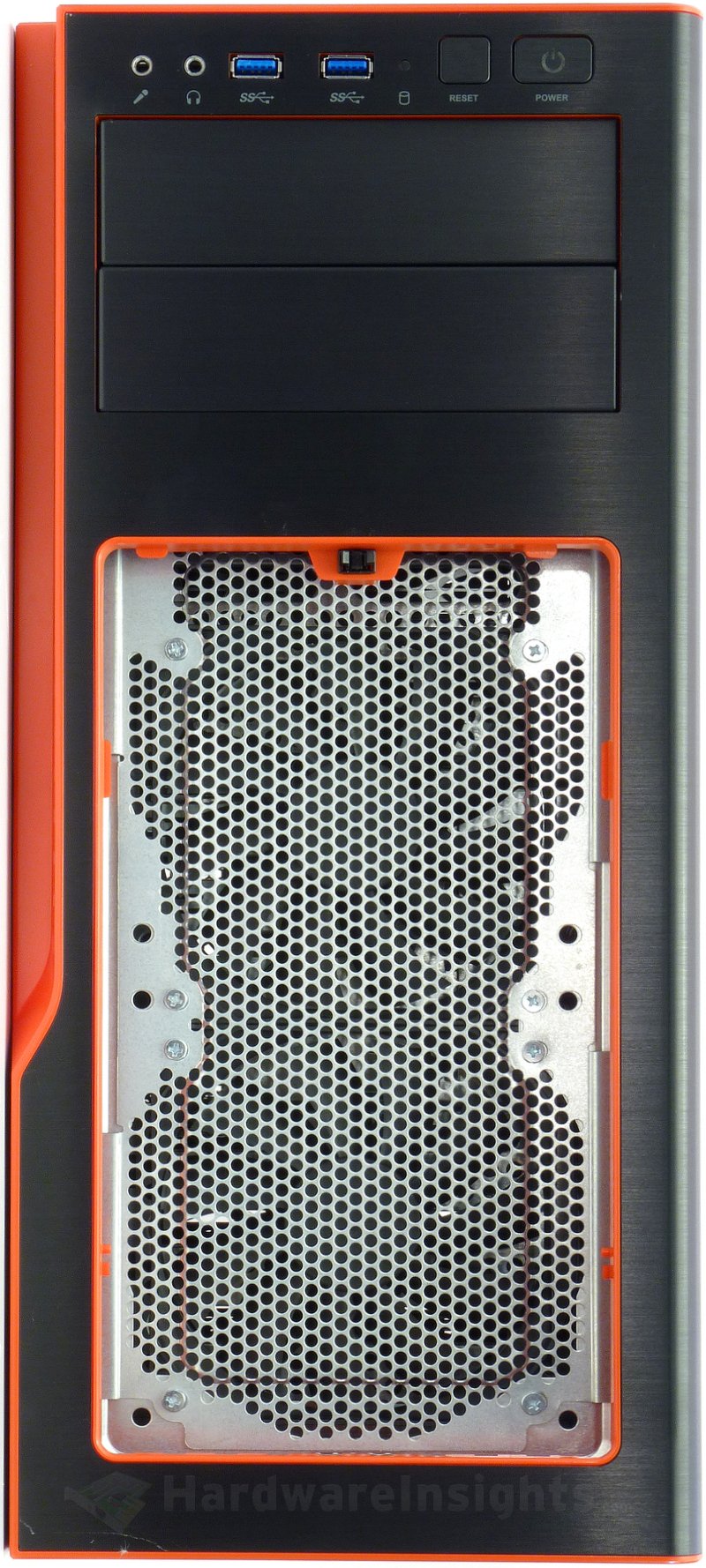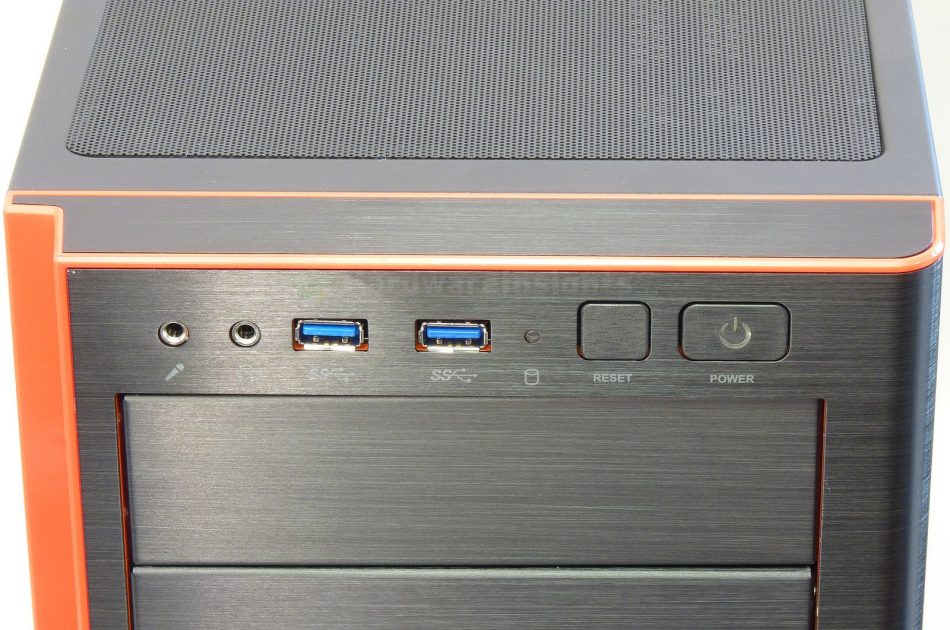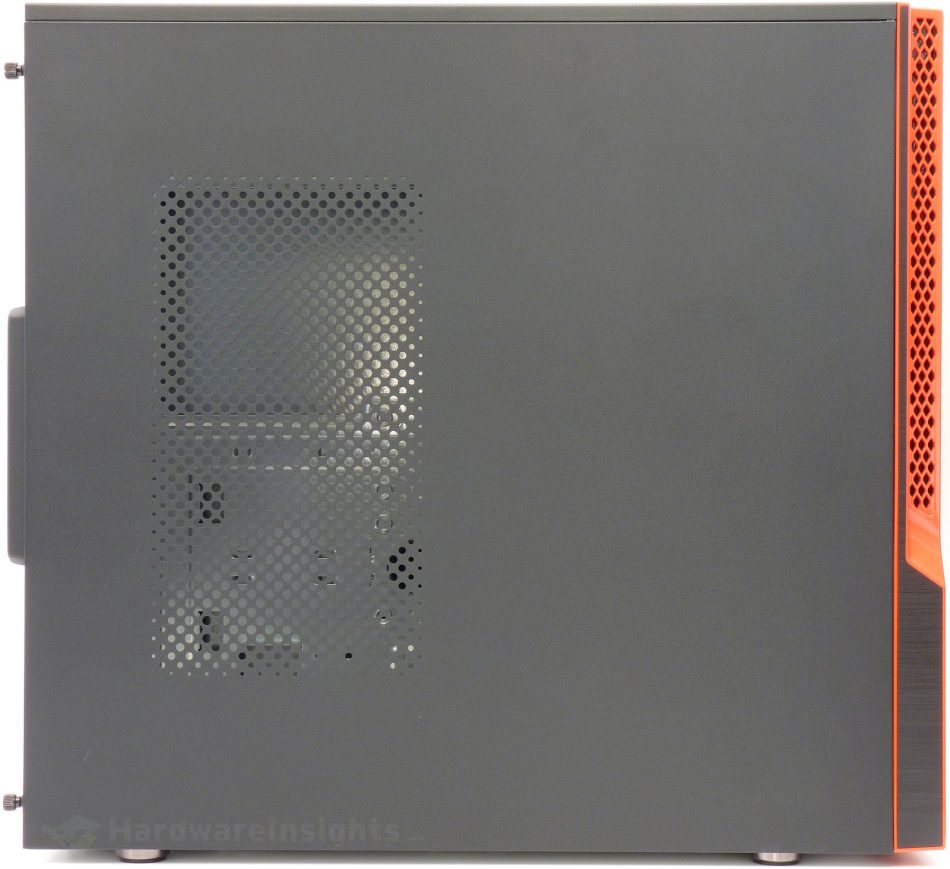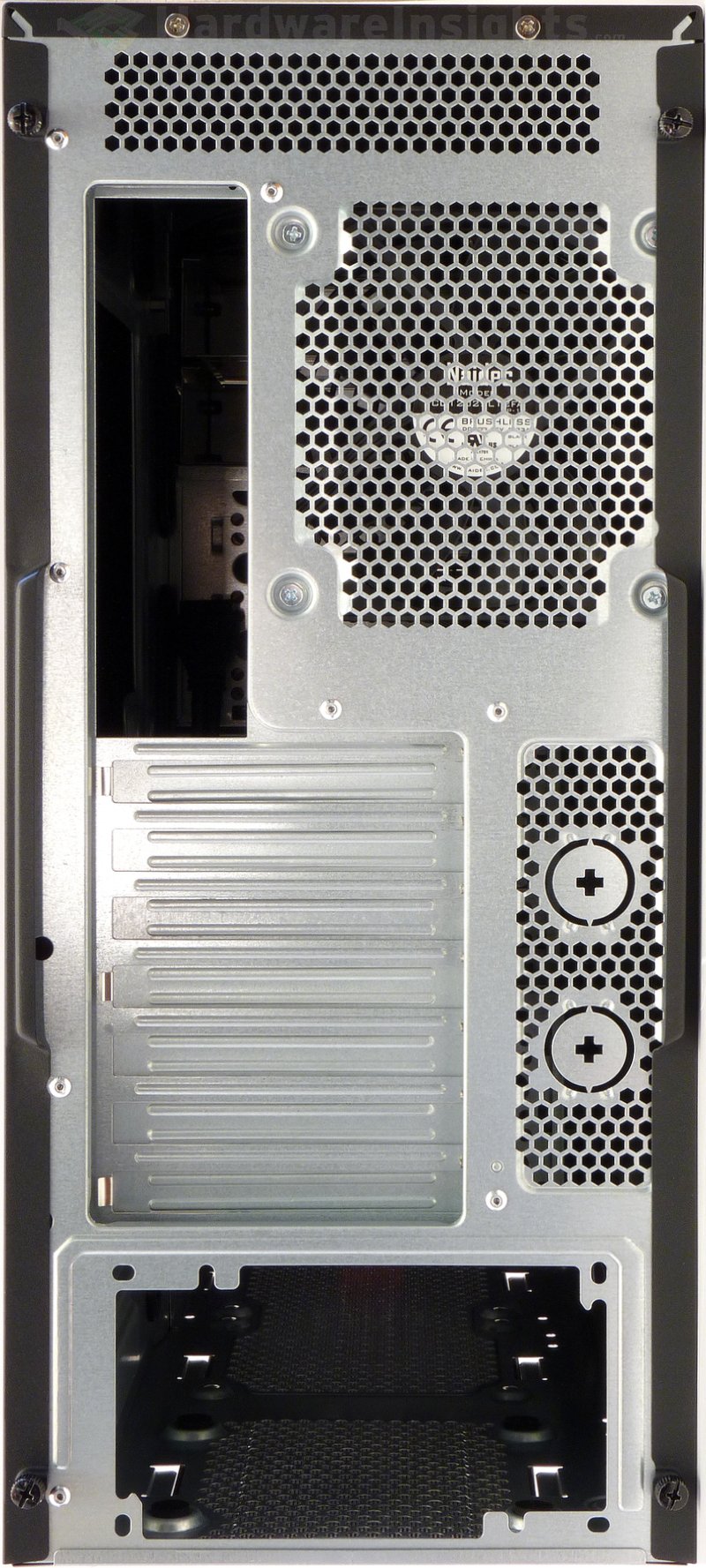Contents
Externals
Let’s start from the front. The panel nicely combines modest appearance with some interesting red and black elements so the design is appealing, but does not look so weird as many competitive ultramodern cases. What we can see on the very front are the front panel ports, two 5.25″ caddies and under them is easily removable fan cover. That is a mesh which also acts as a dust filter. It uses that “push’n’click” retention mechanism also the SilentiumPC M60W has.
The filter is rather fine, attached to a plastic frame. In the upper part it holds by that mechanism as stated. By the bottom, in about 4/5 of it, there are the fixtures which also act as axis of rotation.
You may however notice there is something wrong from the appearance. It is not so much visible from the front view angle but it already looks bad and will get worse. As the frame sometimes sticks in the front panel, you have to push to the bottom part so the upper one gets out. Because of that it is already bent. So while positioned in the front panel, the bottom part shifts more inside to the case, while the remainder is collinear with the front panel and looks OK. It is clearly visible on the profile of the frame. It may be a problem of this particular piece, but I think all the cases will be susceptible to this because of the way the filter is held in the panel.
Behind the filter there is fan grill which hides two 120mm fans. It is sturdier than the M60W position which is completely open, but more air restrictive. As this model has pure SECC skeleton with only transparent finish, also the steel has the basic galvanized-steel look.
On the top-frontal part of the GS50-000R we can see two USB 3.0 ports and two audio jacks. This is pretty much the most basic standard, nothing much to see here. It gets interesting beneath it, more in next chapter.
From the side you can clearly make out the profile of the case. The metal part has a sharply contoured edge, and this is basically your typical base “box” (for lack of a better term). This time there is no top plastic cover and the front one is rather small. The side panel has no window rather than perforations for two 120mm fans. Some people prefer forced airflow from the side, but I do not think there are so many of them, it would be a good thing if manufacturers who make perforated sides also provided covers for those who like tunnel or stack cooling. You can see thumbscrews (embedded into the side panel), they are in both sides. The side panels themselves are not the toughest I have seen, there is very little advanced metal processing and the material is just 0.6mm steel after all.
From the rear you can clearly see the skeleton really uses basic SECC still with only transparent finish, the side and top black panels are then screwed to it. I can’t help myself, to me this feels cheap, I see no aesthetic or other reason to have the black finish only on some parts of the case. There are perforations all over it, that is also the reason it is not the sturdiest. It is not the worst, but I would have expected better from a case of such price. It is likely because of the fact the backside actually consists of two pieces and only a few rivets hold it all together, a conception from last century. You may have noticed most of the modern cases have the whole panel made from single piece.
In the perforations under the fan position there are water-cooling hose openings; if you break them out, you can put in the rubber seals SM provides with the case, nice they thought about that. The power supply mounting position supports the PSU in both orientations. In this case that finally makes sense.
